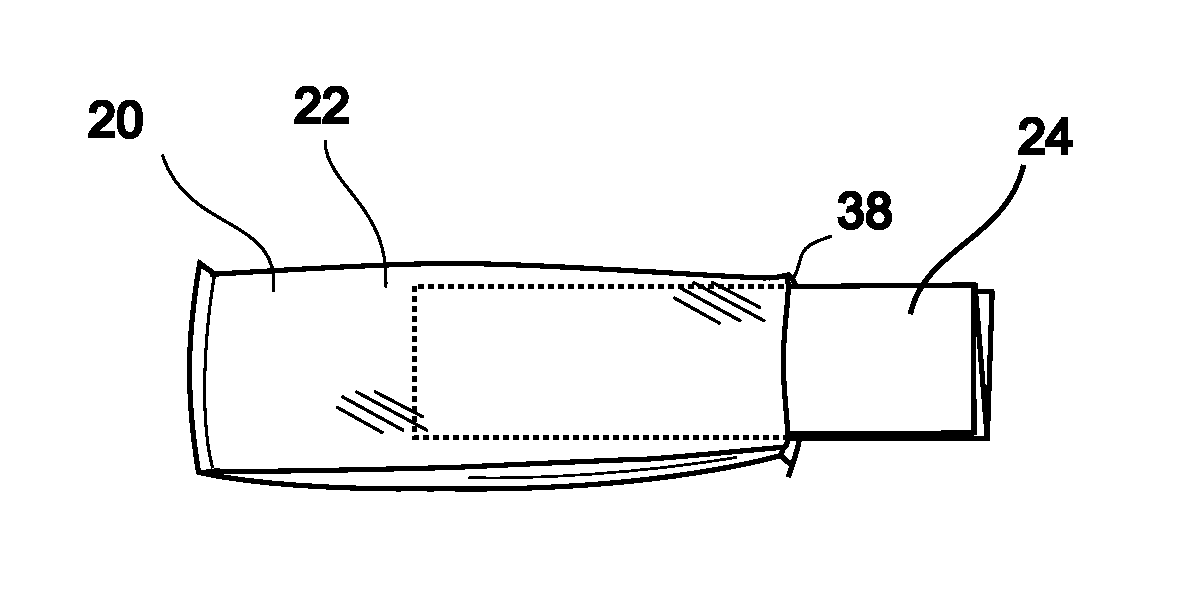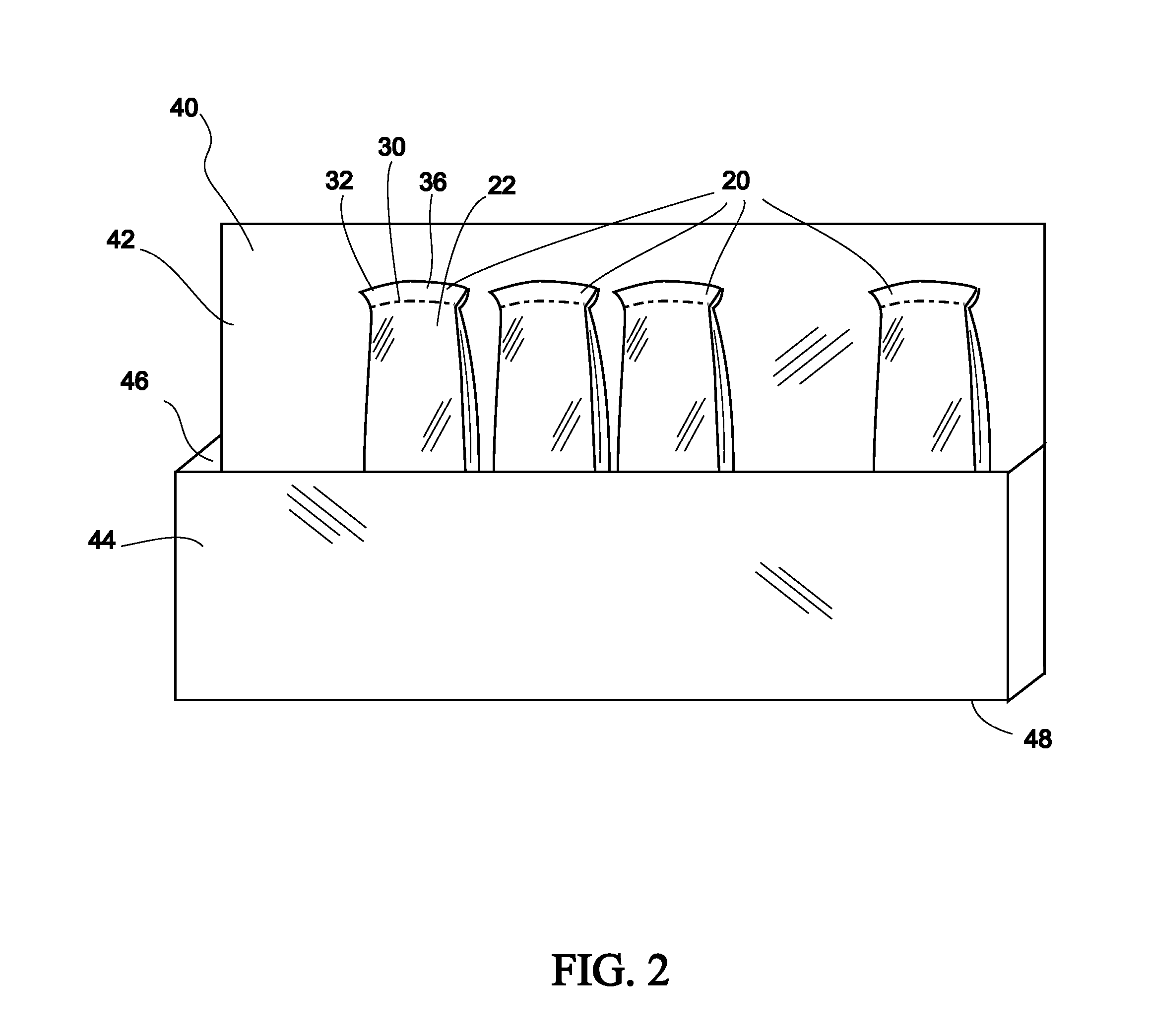Products and methods for reducing malodor from the pudendum
a pudendum and malodor technology, applied in the field of personal care products and methods, can solve the problems of long-standing source of annoyance and embarrassment, unpleasant fishy odor, fishy odor, etc., and achieve the effect of substantially reducing odor or eliminating odor and not irritating the skin
- Summary
- Abstract
- Description
- Claims
- Application Information
AI Technical Summary
Benefits of technology
Problems solved by technology
Method used
Image
Examples
example 1
[0151]A viscous cream comprising lactic acid, mandelic acid, and an oil / water emulsion carrier was formulated using the following ingredients:
WaterLactic acid8.0%Mandelic acid4.0%GlycerinXanthan gum thickenerPolyquaternium 10Aloe vera extractOat extractAllantoinChamomile extractSodium hydroxideMethylisothiazolinone (preservative)Capryl glycol
[0152]The pH of the formulation was 4.0.
[0153]This formulation was then tested with female subjects using an external test agency. Seventeen product summaries were collected from test subjects. The summaries are formatted on a 5 point scale with 5 being the most favorable to 1 being the least. The product was evaluated on the properties as follows, texture, feel after applied to the skin, irritability to the application area, reduction or blocked odor, how well the women liked the product and whether or not they would use the product again or recommend it to a friend. Most of the women fell between the ages of 20-50 with the exception on both ex...
example 2
[0158]Another version of a viscous cream was made with the following ingredients:
WaterLactic acid10.0%Safflower oilMandelic acid2.0%Tricontyl PVP (water proofing agent)Glyceryl StearatePEG- 100 StearateEmulsifing WaxCaprylic Capric TriglycerideCetyl alcoholDimethiconePolyacryamideC13 C14 IsoparaffinLaureth-7AllantoinOat extractChamomile extractSodium HydroxidePhenoxyrthanol (preservative)Chlorphenensin (preservative)Benzoic acid (preservative)Sorbic acid (preservative)Butylene Glycol
example 3
[0159]A composition for treating fishy odor arising from the pudendum was prepared using the ingredients and weight percents shown in Table 1:
TABLE 1Ingredients in a composition for treating fishy odor.%SequenceINCI NamesTrade NamesW / WSuppliers1WaterD.I. Water49.60Open1Disodium EDTAVersene Na20.100Open1Glycerin 99 vegetableGlycerin 995.00Open1Lactic Acid 70%Purac10.00Purac America1DL Mandelic acidMandelic Acid2.00Orient Star310 / 70164021AllantoinAllantoin0.10Open2Glyceryl Stearate & PEGArlacel 1653.50Open100 Stearate2Cetyl AlcoholCetyl Alcohol2.00Open2DimethiconeDow Corning1.00Dow Corning200 / 1002Caprylic / CapricLiponate CG3.50Lipo chemicalTriglyceride2Emulsifying WaxPolawax3.00Croda2Tricontyl PVPGanez WP6603.00ISP2Carthamus TinctoriusHigh oleic8.50Open(safflower) Seed OilSafflower oil3Germazide PSB1.00350% Sodium HydroxideSodium2.500OpenHydroxide3Aloe Barbadensis leafAloe 10 Fold0.50Active organicextract3Avena Sativa (oat) kernelOat extract0.10″extract3Chamomilla RecutitaChamomile0.10...
PUM
| Property | Measurement | Unit |
|---|---|---|
| weight percent | aaaaa | aaaaa |
| weight percent | aaaaa | aaaaa |
| thick | aaaaa | aaaaa |
Abstract
Description
Claims
Application Information
 Login to View More
Login to View More - R&D
- Intellectual Property
- Life Sciences
- Materials
- Tech Scout
- Unparalleled Data Quality
- Higher Quality Content
- 60% Fewer Hallucinations
Browse by: Latest US Patents, China's latest patents, Technical Efficacy Thesaurus, Application Domain, Technology Topic, Popular Technical Reports.
© 2025 PatSnap. All rights reserved.Legal|Privacy policy|Modern Slavery Act Transparency Statement|Sitemap|About US| Contact US: help@patsnap.com



